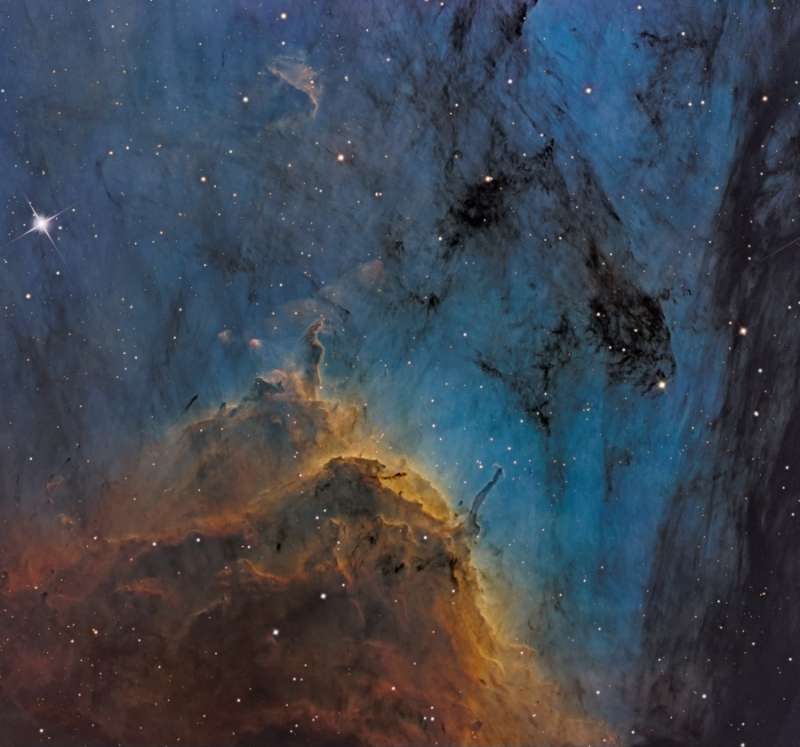
|
Credit & Copyright: Martin Pugh
Explanation:
The prominent ridge of emission featured in
this vivid skyscape
is designated IC 5067.
Part of a larger
emission
nebula with a distinctive shape, popularly called
The Pelican Nebula, the ridge spans about
10 light-years and follows the
curve of the cosmic pelican's head and neck.
The Pelican Nebula close-up was constructed from narrowband data
mapping emission
from sulfur, hydrogen, and oxygen atoms to
red, green, and blue colors.
Fantastic, dark shapes inhabiting the view
are clouds of cool gas and dust
sculpted
by energetic radiation from young, hot, massive stars.
But stars are also forming within the dark shapes.
In fact, twin jets
emerging from the tip of the long,
dark tendril below center are the
telltale signs of
an embedded protostar cataloged as
Herbig-Haro 555.
The Pelican Nebula itself, also known as IC 5070,
is about 2,000 light-years away.
To find it, look northeast of bright
star Deneb in the
high flying constellation Cygnus.
|
January February March April May June July August September October November December |
| ||||||||||||||||||||||||||||||||||||||||||||||||
NASA Web Site Statements, Warnings, and Disclaimers
NASA Official: Jay Norris. Specific rights apply.
A service of: LHEA at NASA / GSFC
& Michigan Tech. U.
Based on Astronomy Picture
Of the Day
Publications with keywords: Pelican Nebula - IC 5070
Publications with words: Pelican Nebula - IC 5070
See also:
